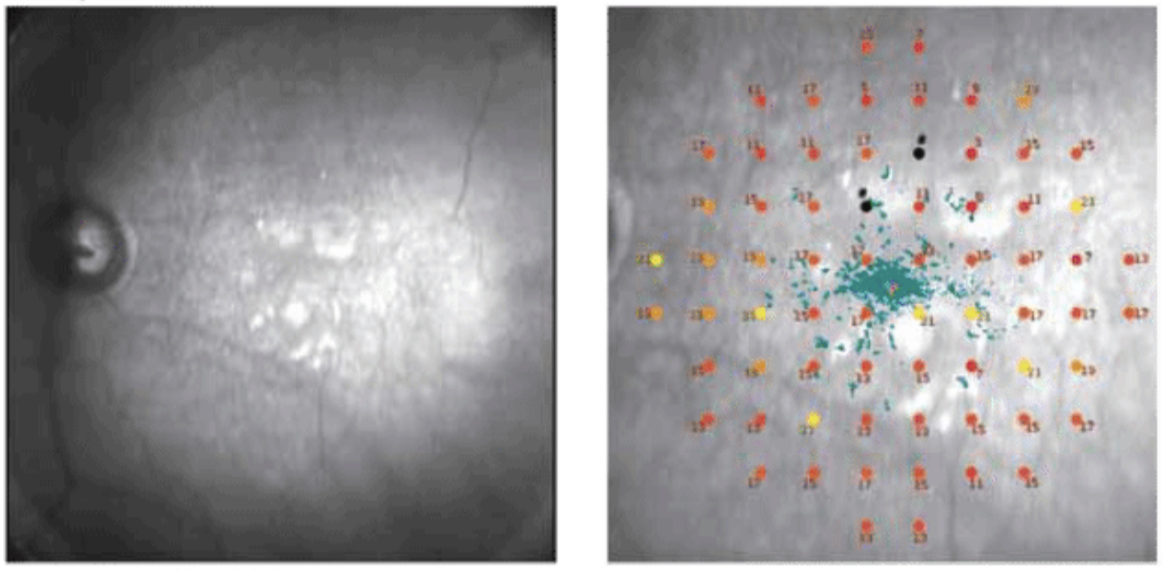 |
|
Microperimetry may help pinpoint risk of AMD progression. Photo: Topcon. Click image to enlarge. |
A recent study explored the ability of microperimetry parameters to predict age-related macular degeneration (AMD) progression. The findings show promise, suggesting that microperimetry—and mean retinal sensitivity value specifically—could help predict the two-year risk of progression to stage-four AMD.
This multi-center, prospective, non-comparative, open-label study included patients with one eye at stage four of the AREDS classification and the other eye at stage three (study eye). The researchers performed a microperimetry examination at baseline and every six months during the two-year follow-up. At the end of this period, each eye was classified as either “progressive” (AREDS stage four) or “nonprogressive” (AREDS stage three).
The study authors analyzed 147 patients. Of these, 30.6% progressed from AREDS stage three to four. Data showed that the microperimetry criterion mean retinal sensitivity was significantly different at baseline between nonprogressive and progressive eyes. Lower values were observed for progressive eyes.
With a threshold for mean retinal sensitivity set at 24.7dB, the study authors reported a diagnostic sensitivity of 80%. Additionally, specificity was 30.4%, positive predictive value was 33.6% and negative predictive value was 77.5%.
Mean retinal sensitivity was the only predictive parameter statistically associated with progression, according to the multivariate analysis which included microperimetry parameters and other routine ophthalmologic factors.
“Given the lack of biomarkers for predicting disease progression in AMD, this result seems promising and could be used in routine practice in contralateral eyes of the AREDS stage four eye to evaluate the risk of progression when mean retinal sensitivity is below 24.7dB,” the study authors concluded in their paper. “Recognition of precursor lesions, or biomarkers of AMD progression to geographic atrophy or neovascular AMD, will be of great interest for developing future therapeutic approaches in intermediate AMD (i.e., AREDS stage three). Identifying these biomarkers may help in selecting patients for clinical trials and defining better endpoints.”
The study authors acknowledged that further studies will be needed to confirm the promising role of microperimetry.
Kodjikian L, Creuzot-Garcher C, Korobelnik JF, et al. Microperimetry to predict disease progression in eyes at high risk of age-related macular degeneration disease: the PREVISION study. Acta Ophthalmol. September 19, 2022. [Epub ahead of print]. |


